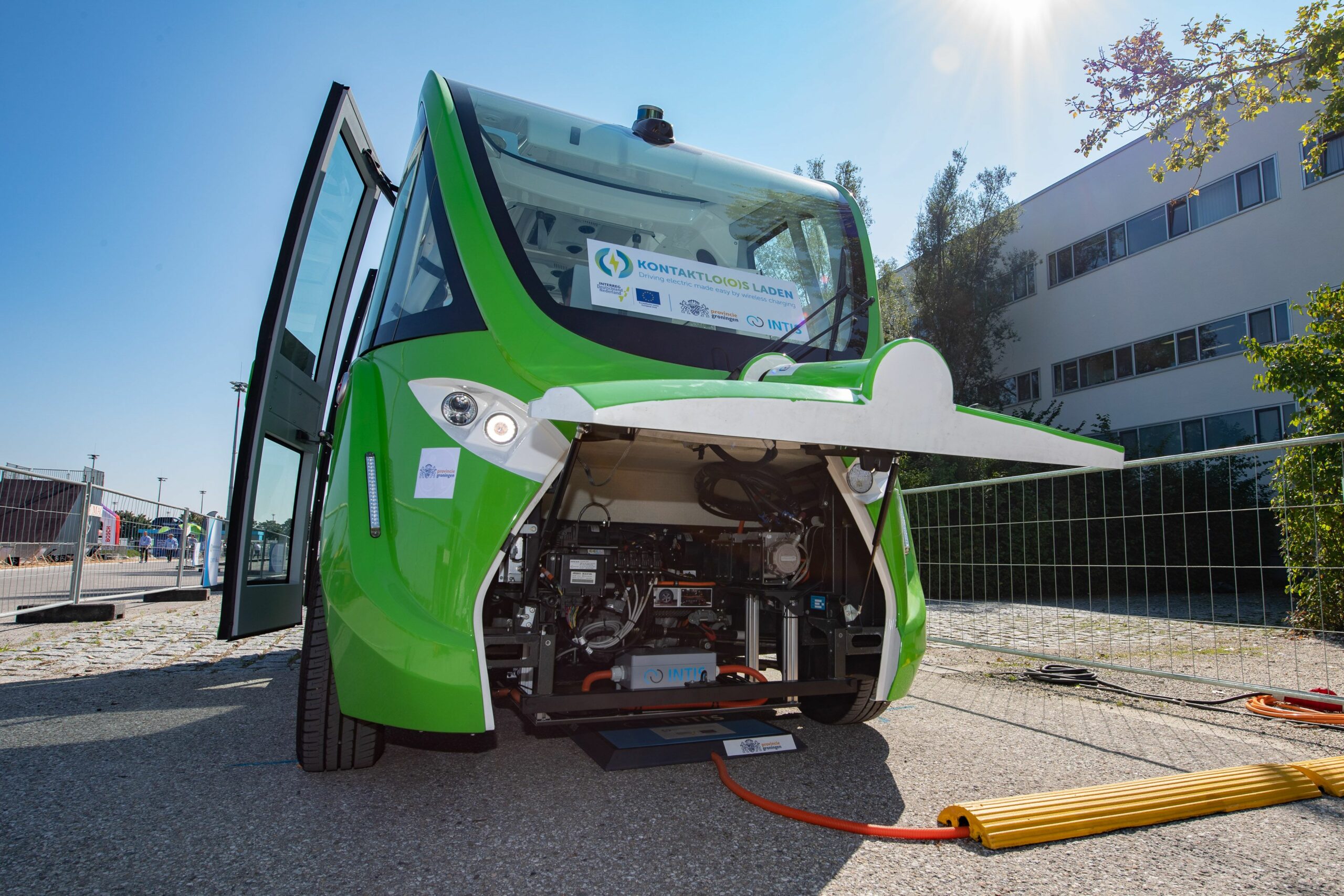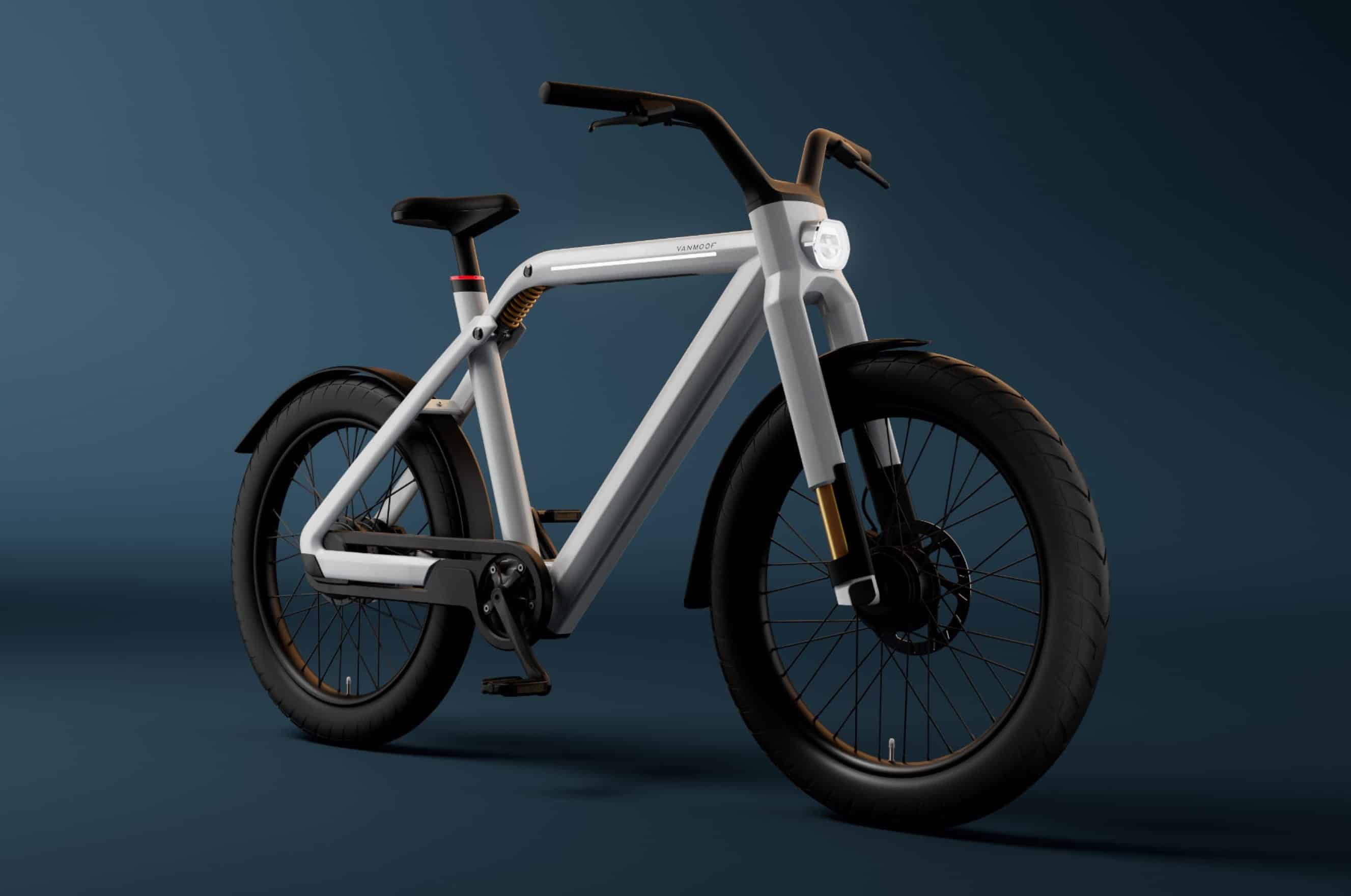
Self-driving transport in Groningen must reach a higher level. The INTERREG project Kontaktlo(o)s Laden is gaining experience with plug-free charging of e-bikes and self-driving shuttles. The Province of Groningen in the Netherlands is cooperating with the German company INTIS, among others. “The system works well. In the coming years we will see more projects involving self-driving shuttles and autonomous charging,” says project leader Hindrik de Haan of the Province of Groningen.
Groningen has been working with Fryslân and Drenthe for five years on various projects concerning self-driving transport to maintain and improve accessibility and livability in the shrinking regions. The large-scale application of self-driving transport in the northern provinces is coming a step closer. This is thanks in part to the new charging system, in which the shuttle charges using a system similar to an induction stove. No more human intervention is required. “Almost all aspects of the shuttles which previously ran in Scheemda, Eemshaven and Loppersum are autonomous, except for having to plug them in,” says De Haan. “Contact-free charging is the final step towards a fully automatic system.”
The charging project for the self-driving shuttle in Groningen is part of an overarching project in which 11 SME companies are collaborating. The province of Drenthe and Emsland (Germany) are also participating. The project is supported by European funding. Within the province, work is being done on the development of various charging systems with different capacities. The German company INTIS supplies both inductive charging for large capacities for the autonomous shuttle and small capacities for e-bikes. Together with the other project partners, inductive charging will be built into the systems of both the e-bike and self-driving shuttle.
Just like a hot plate
The technology behind inductive charging is relatively simple and has been used before, “but its applications in bike-sharing systems and autonomous transport is new,” says De Haan. It works like an induction hot plate. “A plate in the road and another plate attached to the shuttle slide over each other as the shuttle rides toward the charging point. The space between the plates is about 12 centimeters. A magnetic field is created in this space, bringing energy from the ground to the vehicle.”
Demonstration in Munich
Employees of the Province of Groningen were recently at the IAA Mobility trade fair in Munich, a gathering place for the car, bike and tech industry. Visitors were able to take a ride in the self-driving shuttle while listening to an explanation of how charging works without a plug.
In Groningen and Drenthe, too, residents can already become acquainted with the new system. A pilot project for autonomous transport and the new charging system is currently running at the Zernike complex in Groningen. The implementation, aimed at the e-bike, is being built into a bicycle shed and tested in Drenthe and Emsland. A Drymer tricycle will also be tested at the Emsland Moor Museum. The project will be completed in terms of content by the end of 2021.

Ease of use
Contact-free charging offers many advantages, the biggest one being its ease of use. “Whether you apply the charging system to an electric bicycle or shuttle, you remove one action,” says De Haan. “The shuttle automatically drives itself to the charging point. So we can’t forget to charge it.” The system also looks nicer. “Now the electric buses in Groningen are still being charged using a pantograph or electrical installation that is visible to the eye. With inductive charging, the plates are embedded in the ground so they are nicely concealed.”
Plus, inductive charging is efficient. Little energy is lost in the process. But the deployment of the new charging system also has its challenges, such as the high cost. “The system has to be built into the roads and that is not cheap. However, the costs will decrease if the system is used on a large scale.”
Mobility on demand
According to Tim van Winsum, advisor for Slim and Green at the Province of Groningen, the charging system creates new opportunities with the shuttle. “Mobility as a service is really emerging. Perhaps in the future, the shuttle can be called up by means of an app, whereby it runs ‘on demand.’ Using the new charging system, you can be confident that no one will forget to charge it.”
Deployment at a local level
Especially at the local level, inductive, electric charging for self-driving transport in Groningen offers a solution. Think of first and last mile solutions where pedestrians are taken from, for example, a bus stop to their final destination. In Scheemda in the province of Groningen, a self-driving shuttle bus was tested earlier. It drove between the main entrance of the hospital and a bus stop further down the road. Says Van Winsum: “The new charging system is perfect for this type of trial. For longer distances, other power options are more interesting, such as hydrogen, for example.”
The ball is in the market’s court
Now it is the market’s turn to get started with autonomous charging, Van Winsum emphasizes. “Over the next few years, we will see more and more applications involving autonomous charging.” For large-scale deployment in the Netherlands and the rest of Europe, however, some things still need to happen. “At the moment, for instance, no standardization agreements have been made.” This is similar to the discussion about the mobile chargers of Android and Apple products. A universal charger will accelerate the deployment of innovation. De Haan agrees. “With our showcase, we have shown that it can be done. Hopefully, the market will now pick it up further.”
Read more stories about Groningen here








